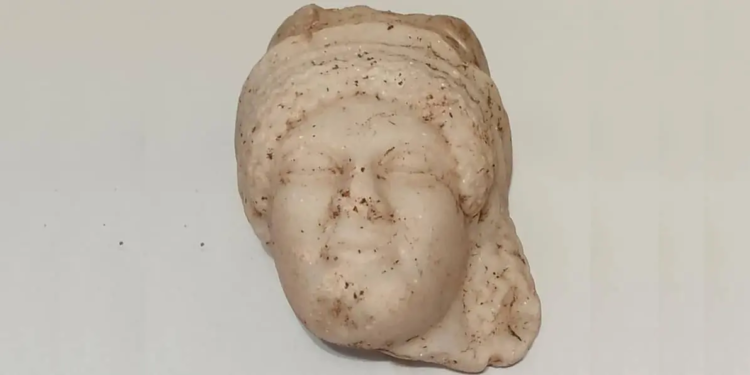A team of Tunisian researchers unearthed, on Tuesday, November 4, 2025, a marble mask from the Punic period on the Toufata archaeological site in Carthage, in the sacred space dedicated to the deities Baal Hammon and Tanit.
According to the press release from the Ministry of Culture, this discovery, dated from the end of the 4th century BC, constitutes a unique example in the Carthaginian archaeological corpus.
A face offered to the gods
Carved from a block of fine marble, the mask represents a woman with Phoenician hairstyle, symbol of a cult style imported and integrated by the Punic elites.
According to the first hypotheses of Professor Imed Ben Jerbania, head of the excavation team at the National Heritage Institute (INP), the object would have been offered as an ex-voto, a present intended to win the favor of the gods.
The material analysis of the marble and the residual polychromy will make it possible to clarify its origin, probably Eastern Mediterranean.
Fruit of Tunisian-Tunisian scientific cooperation
The work is part of a four-year agreement signed in March 2024 between the INP and the Agency for Heritage Promotion and Cultural Development (AMVPPC).
This partnership aims to relaunch the excavations of the sanctuary and to produce new scientific and tourist documentation of the site. The team brings together Imed Ben Jerbania, Nesrine Medahi and Kaouther Jendoubi, archaeologists specializing in iconography and votive art.
A series of remarkable discoveries in Carthage
This is not the first revelation of the Toufata site:
- 2014: discovery of a set of previously unpublished Punic inscriptions.
- 2023: discovery of nine gold coins dating from the 3rd century BC. BC, associated with aristocratic Carthaginian families.
- 2025: the marble mask enriches this sequence, bringing an artistic and ritual dimension to the current research.
These discoveries confirm the exceptional potential of the Carthaginian subsoil and place Tunisia on the map of the major archaeological centers of the Mediterranean.
The Ministry of Culture hailed this find as a “unique testimony to the richness of the Punic-Carthaginian heritage”.
The objective, according to its services, is now to prepare the public exhibition of the mask at the Carthage museum, after restoration and complete study, with a view to promoting tourism and education.
Also read:








